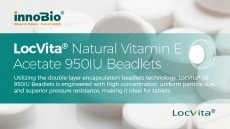BASF combines human, animal nutrition units in cost-cutting drive
combat price pressure on its vitamin businesses in the long-term,
by combining its human and animal nutrition resources under the
banner of a new nutrition unit within Fine Chemicals.
BASF has communicated a number of price increases for various vitamin products, both human and animal, in the past few weeks. The news on the refocusing demonstrates that the group is still seeking to address the costs problem internally, rather than just passing it on to its customers.
"Our market environment has changed drastically in the past few years,"said Dr Wolfgang Büchele, head of the fine chemicals division. "It has become more competitive and prices for many products have fallen significantly".
In particular, BASF has grappled with price pressure from Chinese suppliers, and increasing costs of raw materials and energy have strained margins for many of its products.
The main synergies between the animal and human nutrition divisions lie in marketing and sales, where BASF is aiming for a "lean, transparent and clean structure".
The establishment of the nutrition unit is timetabled for November 1. According to Büchele the implications for BASF's customers are that it will allow for "a speedier and more flexible response to market requirements".
There will be no changes in production, since although the vitamin and carotenoid portfolio for each use is very similar, the formulations have some important differences.
However the animal nutrition station in Offenbach, established in 1985 to develop nutritional additives in animal nutrition, is to close in second quarter 2007. While it was said to be pioneering when it first opened, nowadays such technology and test product services are much more widely available in the marketplace.
A spokesperson would not reveal the level of savings it expects to realise as a result of the refocus, but said that the aim is to fulfil, as soon as possible, the financial expectations of the group - that is, "to earn a premium on the cost of capital".
Between them, the Offenbach closure and the combination of the animal and human nutrition units will result in 73 job losses; BASF has said that the employees will be offered other positions withing BASF or voluntary redundancy packages.
In August the Fine Chemicals division reported sales of €465m for Q2, up 10 per cent on last year's period, and income from operations (EBITDA) of €96m compared to €12m last year. However this boon was attributed not to vitamins but to a swift trade in aroma chemicals and gains from contract manufacturing and personal care acquisitions.
EBITDA also included a special income figure of €66m from a reduction in a fine imposed by the EU for BASF's involvement in a vitamin cartel in the 1990s, and special charges for restructuring measures.
BASF does not split out results from the nutrition businesses from the overall division, but chairman of the board Jûrgen Hambrecht said: "Overcapacities and high raw material costs continue to put pressure on margins for lysine and vitamin C." In 2005 the group initiated a restructuring programme in an effort to improve margins for the division. The most significant measure to date was the closure of the plant in Grenaa, Denmark, which has helped reduce fixed costs in vitamin C and means that BASF's primary source is now Asia.
Commenting on last week's announcement that BASF is increasing prices of its food grade vitamin A formulations by 12 per cent, Frost & Sullivan analyst Ashwin Sukumaran told NutraIngredients.com it is likely that BASF's customers will pass on the vitamin A price increases to consumers. But they should not feel too much of a strain on their pockets since the dangers of too much vitamin A mean that only small amounts are added to supplement and food formulations anyway.
He expects formulators may turn to precursor beta carotene, which typically commands a higher price but is said to be a 'safe' source, instead of straight vitamin A.













